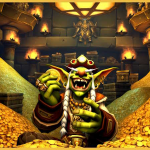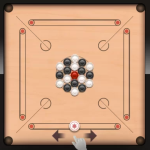
In the realm of color prediction gaming, the dynamic interplay between hues and human emotions creates a unique and immersive experience. This article explores the psychological impact of colors on players’ emotions within the context of color prediction games, shedding light on how the strategic use of color influences the gaming atmosphere and player engagement.
The Language of Colors:
Colors have a language of their own, communicating emotions and evoking feelings that resonate with players on a subconscious level. In color prediction games, where the visual element is paramount, developers harness the psychological power of colors to shape the overall gaming experience.
Red: The Color of Excitement:
The color red is synonymous with passion, energy, and excitement. In color prediction games, strategic use of red hues can elevate the intensity of game play. When players encounter a red prediction, the emotional response tends to be heightened, creating a thrilling and adrenaline-fueled experience.
Blue: Instilling Calm and Focus:
Blue, with its calming and serene qualities, is often associated with focus and concentration. In color prediction games, the strategic placement of blue hues may provide a moment of respite for players, allowing them to collect their thoughts and make more deliberate predictions.
Green: Symbolizing Growth and Progress:
Green is a color associated with growth and progress. In color prediction gaming, the use of green can signify positive outcomes, reinforcing a sense of accomplishment when players make accurate predictions. This association with growth contributes to a positive and rewarding gaming experience.
Yellow: Eliciting Optimism and Positivity:
Yellow is a color that evokes feelings of optimism and positivity. Incorporating yellow hues in color prediction games can create a bright and cheerful atmosphere. Seeing yellow predictions may uplift players’ spirits, fostering a sense of optimism and enhancing the overall enjoyment of the gaming experience.
Purple: Adding a Touch of Mystery:
Purple, often linked to mystery and intrigue, adds a layer of complexity to color prediction games. The strategic inclusion of purple hues in certain game elements can create an aura of mystery, prompting players to approach predictions with a heightened sense of curiosity and engagement.
Black and White: The Power of Contrast:
The classic duo of black and white is a powerful tool in color prediction gaming. The stark contrast between these colors can emphasize important elements, draw attention to critical information, and create a visually appealing interface. The judicious use of black and white enhances clarity and ensures that players focus on key aspects of the game.
Color Combinations and Cognitive Impact:
Beyond individual colors, the combination of hues plays a significant role in the cognitive impact of color prediction games. Developers leverage color combinations to guide players’ attention, convey information, and create a visually cohesive and engaging gaming environment. The careful balance of color palettes contributes to the overall aesthetics and emotional resonance of the game.
Seasonal and Event-Based Color Themes:
Seasonal or event-based color themes provide an opportunity for developers to infuse variety and novelty into color prediction games. Whether celebrating holidays, festivals, or special occasions, adapting color palettes to reflect the theme adds a layer of excitement and freshness, enhancing the overall gaming experience.
Accessibility Considerations:
While exploring the psychological impact of colors, it’s essential to consider accessibility. Players with color vision deficiencies may experience color prediction games differently. Developers can implement features such as colorblind-friendly options or alternative visual cues to ensure inclusivity and accommodate diverse perceptions of color.
Conclusion:
In the vibrant world of color prediction gaming like daman games, colors serve as powerful conduits for emotions, shaping the player experience in subtle yet profound ways. The psychological impact of colors influences player engagement, immersion, and the overall enjoyment of the gaming journey. By understanding the language of colors, developers can craft a visually compelling and emotionally resonant environment that captivates players and elevates the artistry of color prediction games.





